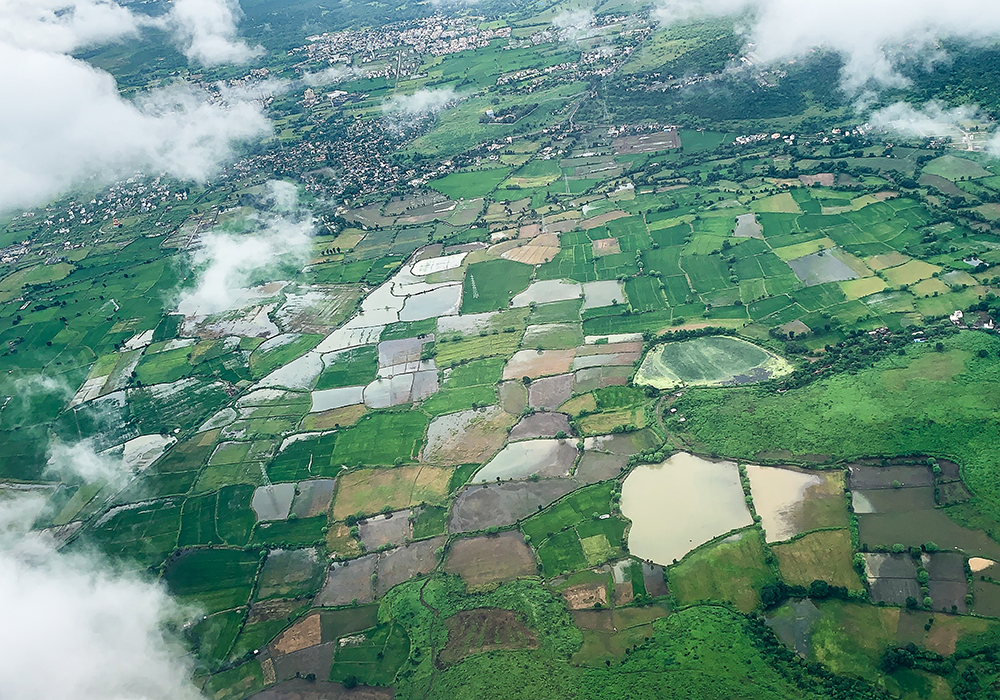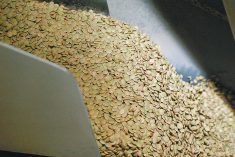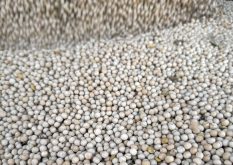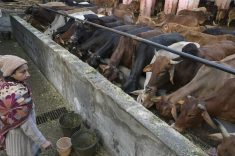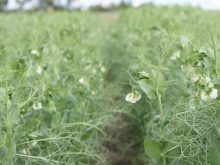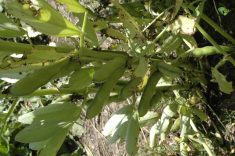The southwest monsoon is expected to deliver good rainfall this year
SASKATOON — India is extending its exemption on pea import restrictions to June 30. It had been set to expire on April 30.
Farmers in that country are in the midst of harvesting their winter or rabi crop of pulses and it looks like another disappointing crop.
The government estimates that growers will harvest 12.2 million tonnes of chickpeas in the rabi (winter) season. That would be nearly identical to last year’s disappointing output of 12.3 million tonnes.
Read Also

Crop quality looks good this year across Prairies
Crop quality looks real good this year, with the exception of durum.
G. Chandrashekhar, senior editor and policy commentator for the Hindu Business Line, thinks it could be smaller than that.
In a recent article for Saskatchewan Pulse Growers, he said he believes the government estimate is overstated, as it was the previous year. He forecasts a crop of between 10.8 and 11.3 million tonnes, well below the government target of 13.6 million tonnes.
“India’s rabi pulses production has fallen well short of the target,” said Chandrashekhar.
“It is no wonder that supply-demand fundamentals have tightened further and prices have escalated, much to the consternation of policymakers.”
In response, the government has imposed strict stock limits on handlers of the crop and is allowing the free import of pigeon pea, black matpe and lentils.
“In a surprise, yet palpably desperate move in early December, the government lifted the quantitative and tariff restrictions on yellow peas,” said Chandrashekhar.
That policy has now been extended.
Chandrashekhar said India cannot afford another year of bad crops as it heads into the summer or kharif growing season.
The fate of that crop will largely depend on the southwest monsoon, which typically starts in early June and lasts for about eight weeks.
The preliminary forecast for India’s rainy season looks favourable, according to Drew Lerner, president of World Weather Inc.
“It should be a good monsoon season. The overall production potential should be good.”
One reason for his optimism is that four of seven international models predict a return to La Nina by August. It typically delivers good rainfall across India. Another reason is that the Indian Ocean Dipole is in its positive phase.
That’s when ocean temperatures in the Arabian Sea are warmer than normal while temperatures in the eastern Indian Ocean near Indonesia are cooler than normal.
“That tends to enhance moisture in India,” said Lerner.
He forecasts that the better rains will arrive toward the end of the monsoon season in July through August.
India will have a new government in place by early June and containing food price inflation will be at the top of any new government’s agenda.
“Any decision to further liberalize import may be taken in September after assessing the next kharif crop prospects and food prices prevailing then,” said Chandrashekhar.
Due to India’s strong imports, global pea supplies are expected to be tight coming out of the 2023-24 crop year.
Gaurav Jain, analyst with AgPulse Analytica, said in a recent article he wrote for the Global Pulse Confederation (GPC), that carryout supplies from the world’s major exporters — Canada, Russia, Ukraine and the United States — will be 818,000 tonnes in 2023-24. That would result in a nine per cent stocks-to-use ratio.
That’s down from 1.54 million tonnes and a 19 per cent stocks-to-use ratio the previous year.
“A stocks-to-use ratio dropping below 10 percent for major exporters will have a serious impact on cash prices, which in turn will incentivize farmers across these geographies to allocate more land for pea crops,” Jain said in his article.
Statistics Canada forecasts 3.8 million pea acres in Canada, a 4.4 per cent increase over last year.
AgPulse forecasts 15 million tonnes of world production in 2024, up from 14.5 million tonnes last year.
“But with opening stocks lower than ever, the supplies will be nearly on par with 2023-24,” Jain said in the GPC story.
“If Indian imports continue for the 2024-25 crop, supplies may fall short of meeting the demand of other large consumers, such as China, Spain, Turkey and others.”
Contact sean.pratt@producer.com




